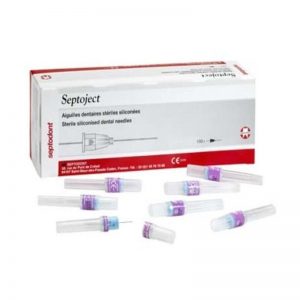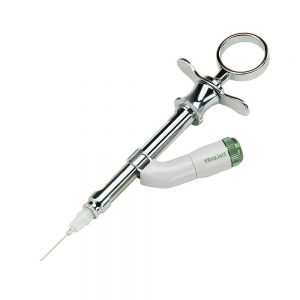Anesthetic Needles
Anesthetic Needles selection should be based on two things: injection type and depth of penetration. Bevel – The point or tip of the needle. The greater the angle of the bevel with the long axis of the needle, the greater the degree of deflection as the needle passes through the soft tissues. The higher the gauge the smaller the internal diameter. The most common gauges are 25, 27, and 30 gauges. Malamed recommends using the smallest gauge (largest diameter) Anesthetic Needles available which allows for easier aspiration, less deflection of the needle as it perforates the soft tissue, and less chance of breakage at the hub. The needle comes in three lengths – long, short and ultra-short. The needle should not be inserted into the hub as retrieval during breakage is difficult so a long or short needle should be used for blocking anesthesia. Hub – The hub is the plastic or metal piece through which the needle attaches to the syringe. Therefore, attachment requires that the needle be pushed onto the syringe while being screwed on. The syringe end of the needle perforates the rubber diaphragm of the cartridge when attached to the syringe.
Showing all 2 results


